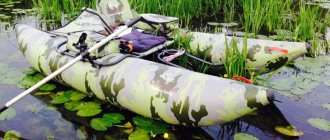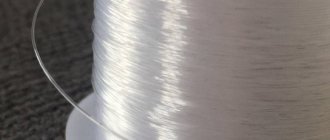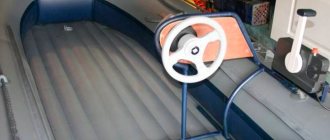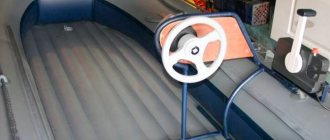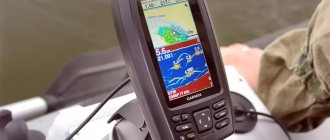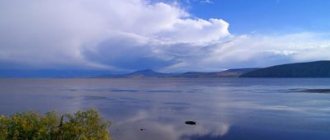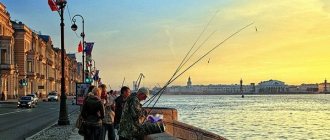Today, many fishermen admit that fishing from the shore is becoming less and less effective. Even by feeding fish in their usual places, it is becoming less and less possible to get a good catch. Therefore, most fishermen try to acquire at least some kind of watercraft in order to move further from the shore and try to increase their catch.
Usually in these cases they use an inflatable boat or catamaran. What is the difference between these watercraft? Or what is the advantage of a catamaran over a boat? Let's figure it out.
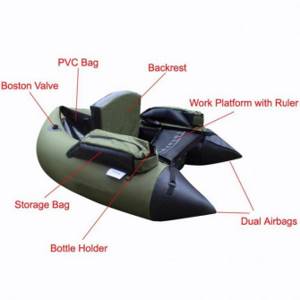
What is a catamaran?
If you look at the photo of a fishing catamaran, it is easy to see that there is a lot in common between it and an inflatable boat. An inflatable boat is a single unit, even if it is divided into compartments and each of them is inflated separately.
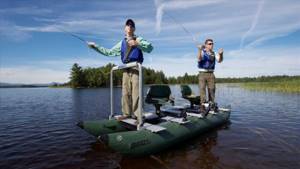
The catamaran has two separate floats between which there is a deck. The catamaran's area is much larger due to its width and there is enough useful space even for setting up a small tent or canopy.
Read here Glue for a boat - instructions on how to properly and quickly glue a PVC boat (85 photos)

It is almost impossible to sink a catamaran, since its carrying capacity is much higher than that of a boat.

Catamarans today
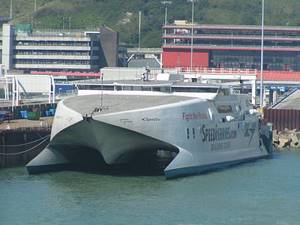
Catamarans are already quite actively used as passenger ships in closed seas over not very long distances (for example, in the Mediterranean Sea). Here they become a competitor to aviation.[8]
In recent years, so-called catamaran yachts made of aluminum, marine steel and composite materials have appeared. These catamarans are divided into two categories - serial and one-of-a-kind, the so-called super- and megacatamarans, which are built according to individual solutions and with full individual equipment, which allows them to be classified as luxury. Most yacht catamarans are sail-motor, which helps protect the environment and save energy.
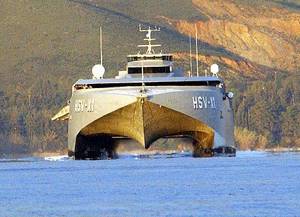
Joint Venture
, a large experimental, high-speed military catamaran built by Incat.
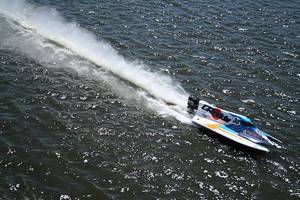
Racing catamaran motorboat (US Grand Prix, 2006)
In motorboating, the catamaran form is also the most common, allowing the creation of high-speed boats that reach speeds of up to 250 km/h and higher, such as Formula 1 powerboats, or Class 1 sea boats. The so-called tunnel catamaran design makes it possible to implement the principle of dynamic air cushions, which is very significant at such speeds - the connecting bridge is given an aerodynamic wing profile, which creates increased pressure and lift under the bottom, which is increased by the fact that the air is additionally blocked from the sides by the hulls, from below by the water surface, and from the front by the incoming air flow. The resulting air cushion allows the hulls to be lifted out of the water, reducing drag, so that the boats only touch the water with the propellers and the rear ends of the floats.
What types of catamarans are there?
Considering a wide variety of catamarans, we can highlight the following:
Inflatable catamaran for fishing. Such catamarans are usually small in size and easily fold into a backpack. As a rule, they are designed for one person and allow the fisherman to reach the most inaccessible parts of the reservoir.
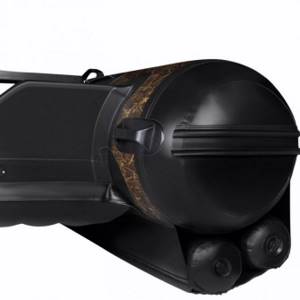
Catamarans with rigid cylinders. As a rule, they are transported on car trailers and have a much greater carrying capacity. They are often equipped with motors that allow these vessels to develop decent speeds.
Rowing and expedition catamarans
They are preferred by fans of adventure, but not extreme ones. These are vessels for fishermen, lovers of swimming in the middle of a lake or river, and long rafting trips down rivers of varying difficulty. Expeditionary watercraft are distinguished by their simplicity and reliability of design. So that you can take not only luggage, but also passengers on the road, a reinforced deck is provided. Vessels of this category are designed for passengers, but it is better to calculate the permissible number of people not by the number of seats, but by the carrying capacity.
Devices for four rowers are in greatest demand. They allow you to put six people on the oars if necessary. These are river rafting vessels, but they are not designed for route complexity higher than “three”.
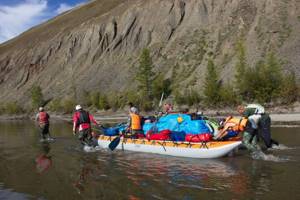
Tourist catamarans
Kats for water tourism with extreme elements. It is more difficult to choose such a vessel than a kat for leisurely rafting with a large group and fishing, because it is not only a means of transportation, but also a sports equipment. The fabric of inflatable cylinders, their shape, the seating position of tourists and many other factors are important. Since the number of rowers affects the dimensions of the vessel, it is usually designed for 2-4 people. Large vessels can also be found on sale, but they lose in maneuverability and speed. Externally, katas for tourism are easy to recognize by the shape of the balloon: the nose is thick.
During rafting on mountain rivers, decking is prohibited, so this type of vessel often gets by without a deck at all. You need to look for a catamaran taking into account the river: if it is mountainous and winding, you need a light and maneuverable option.
Sports catamarans
These are sports equipment for racing on extreme routes. Their main difference is increased maneuverability and lightness. The catamaran is made as light as possible; there is no cargo compartment. The carrying capacity of sports vessels is small, but they allow extreme sports enthusiasts to navigate difficult routes. This type of transport is not suitable for long trips. It is difficult for beginners to choose the optimal product on their own, so it is better to consult with more experienced athletes.
Is it possible to make a catamaran yourself?
If a catamaran is such a convenient means for fishing, then a completely reasonable question arises: is it possible to create a homemade catamaran for fishing with your own hands?
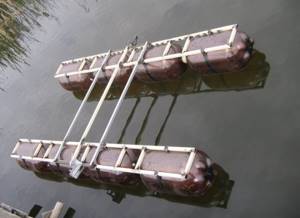
The experience of many fishermen suggests that this is possible. Moreover, many of them are proud of their catamarans and post their photos on social networks.
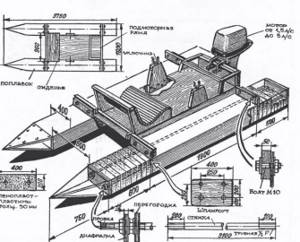
Let's see what materials are suitable for creating a homemade catamaran.
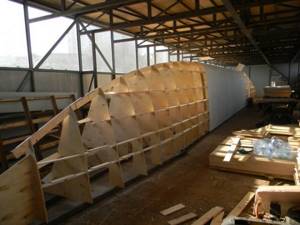
Material for catamaran
The most popular among fishermen is a PVC catamaran for fishing.

To do this, use fairly dense PVC with a density of approximately 800 g/sq.m.

Thanks to such cylinders, you can make not only a durable, but also a heavy-duty catamaran that can accommodate more than two fishermen.

Summary
One way or another, as usual, it all comes down to two factors:
- Personal preferences
- Finance
The two types of boat provide completely different sailing sensations, so it is highly recommended that you charter each and compare the sensations before purchasing. Be that as it may, we can safely say that the catamaran is ideal, if not for purchase, then certainly for charter. Yes, it is more expensive, but it also offers a lot.
The catamaran market is on the rise and growing rapidly. The shipyards Lagoon (Beneteau), Fountaine-Pajot and many other manufacturers annually increase their turnover due to them. And at the moment, there is no sign of a decline in demand in the foreseeable future.
However, among classic yachts on the secondary market there is a much wider range of choices in all respects, including year of construction and materials. If sailing is, first of all, a sport for you, and you have plans to race at regattas, then forget about catamarans, a monohull cruiser is your boat.
Author: Mikhail Safronov
What is a beam?
You can read on the Internet that this or that catamaran has two or three beams. What it is? Beams are the rigid crossbars that connect the cylinders of a catamaran.
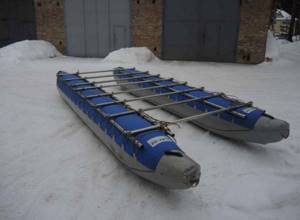
Note!
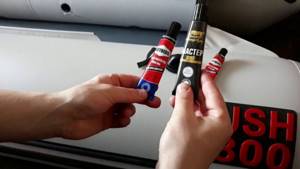
Glue for a boat - instructions on how to properly and quickly glue a PVC boat (85 photos)
Do-it-yourself boat motor - tips for beginners, projects, drawings and step-by-step description of the construction of the main components and elements (video + 120 photos)

Steering console for a boat - review of the best models and installation tips for different types of boats (100 photos and videos)
If the catamaran is small and designed for one or two fishermen, then two beams will be quite enough, since the length of the cylinders is not long.
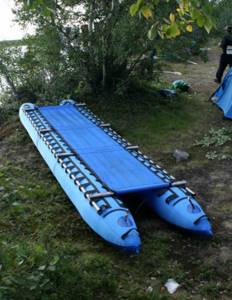
To accommodate a larger number of fishermen, longer cylinders are used and, accordingly, it is necessary to install a three-beam system.
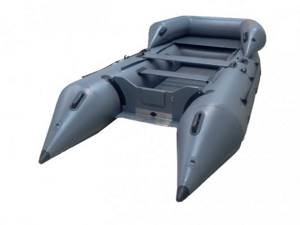
Design
The vessels, consisting of two hulls, are connected to each other by a deck or truss bridge.
A design feature of most sailing catamarans is their deckless design - the hulls are connected by beams, the space between which is covered with a mesh along which the crew members move. Such a solution significantly limits living conditions, but this is tolerated on small vessels intended for participation in competitions.
| This section of the article has not been written. According to the plan of one or more Wikipedia contributors, a special section should be located in this place. You can help by writing this section. This mark was set on November 30, 2021 . |
Varieties
- Planing hull;
- Semi-displacement hull;
- Displacement hull.[2]
- A vessel with a small waterline area (SWATH).
Which support is better?
A support is a platform that is attached to beams. It can also be hard and soft. Soft platforms have the advantage that they are easy to fold and pack without taking up much space.
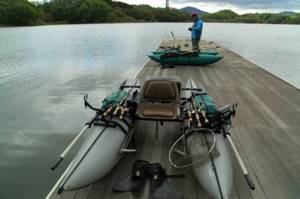
Conversely, a rigid platform is much more convenient; it allows you to move freely around the catamaran and place cargo on it, but transporting such platforms is much more difficult.
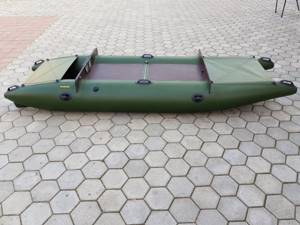
The sea bun will roll away from everyone
Author Vyacheslav Shpakovsky
04/29/2014 10:00 (Updated: 04/29/2014 11:52)
Eureka » Inventions
The catamaran cannot be confused with any other sea vessels. One of the most ancient inventions is a ship with two hulls, between which there is some space. It is known that such a structure is very stable, that is, it is more difficult for waves to overturn it, and its deck area is very large. However, for some reason such ships are still rare. Why?
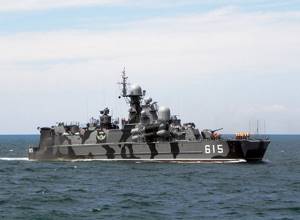
A catamaran is... “tied logs”
Of course, everyone knows about catamarans. Another thing is that few people know that once a catamaran had only one hull. In fact, a catamaran in the exact meaning of the word translated from Tamil is a raft - “kattu-maram” or “tied logs”. That is, a platform made of several logs, carrying one lateen or luger (rack) sail, a steering oar and retractable centerboards. The birthplace of such vessels is the Coromandel coast of India, the inventors are the ancient fishermen of Madras. They knitted (and still knit) these light, unsinkable and stable sailing rafts from an odd number (from three to nine) logs. The central log is thicker than the others, its nasal end is pointed and slightly bent upward; the remaining logs are attached to the middle one so that the bow of the raft is pointed, like a pirogue. The Indians are so masterful in the art of steering such a raft that they sail on it in any weather and even manage to jump over sand bars (sand deposits at the mouth of rivers flowing into the sea), moving at a speed of 20 knots, i.e. 37 km/h.
The famous Brazilian jangada is also very similar to a catamaran, which (and not at all about some street boy!) is sung in the popular USSR film “Generals of the Sand Quarries,” based on the novel “Captains of the Sand” by Jorge Amado. It was also tied together from several hewn logs and due to this it was both very stable and developed a decent speed!
How to choose a motor for a catamaran?
Compared to a boat, a catamaran requires a much weaker engine, which means it is lighter and will consume less gasoline.
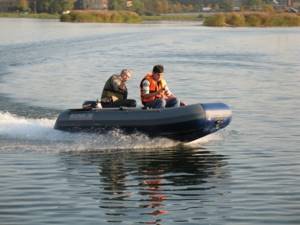
Note!

Holders for spinning rods for boats - review of models, DIY methods, tips for selection and use (120 photos)
Boat tuning - features of improving the boat. Review of the best ideas and video tips on how to improve a boat with your own hands (140 photos)
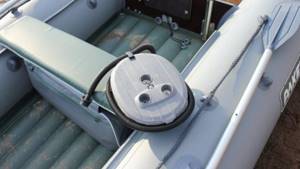
Boat pumps - rating of the best models and manufacturers. 145 photos and videos of various pumps in operation
Although motors are installed on larger catamarans, even a single-seater fishing catamaran is capable of carrying a motor.

Advantages and disadvantages
Advantages [3] The
advantages of catamarans include a large deck area, greater initial stability, a smaller pitching amplitude, and the ability to have large hull extensions, which provides greater speed. The catamaran design makes it possible to spread the power plant, which increases its reliability from mechanical damage.
- Large deck area[4].
- With a smaller displacement - the ability to carry more sail at small
angles of heel. - Lower (by several percent) level of motion during waves compared to a single-hull vessel[5].
- Unlike the deck position of a monohull, the deck of a catamaran remains parallel to the surface of the water at all speeds, maintaining the necessary visibility and contributing to more efficient fuel economy.
- Catamarans are easier to sail and more maneuverable than monohulls.
Disadvantages
The large wetted surface area makes catamarans ineffective at low speeds; the use of two hulls and a connecting bridge requires more metal consumption during construction.
- The connecting bridge is subjected to heavy loads during strong motion (however, this problem, which has been the main problem for a long time, can today be resolved through the use of modern durable materials).
- Increased mass of hull structures per ton of displacement.
- Increased wetted surface and viscous resistance (and therefore ineffective at low speeds).
- A sharp decrease in stability when the roll increases to a certain angle, which leads to the risk of capsizing (when the roll reaches the capsizing angle, a rapid transition of the righting moment to capsize occurs, since the center of gravity rises much higher than the center of buoyancy forces).[6].
- Increased overall width.
- Multihull ships are not suitable for operations in ice.
Photo of a catamaran for fishing
Note!

Inflatable chairs for a boat - tips on selection, installation and step-by-step description of how to make it yourself (100 photos and videos)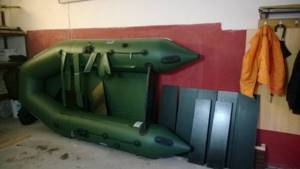
How to store a boat - how to properly store it in winter and summer? Tips, photo and video recommendations from experts
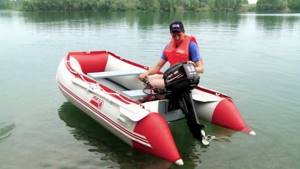
PVC boats for motors - review of the best models, advice from professionals on selection, care and operation (135 photos + video)
Help the project, share on social networks 

0
